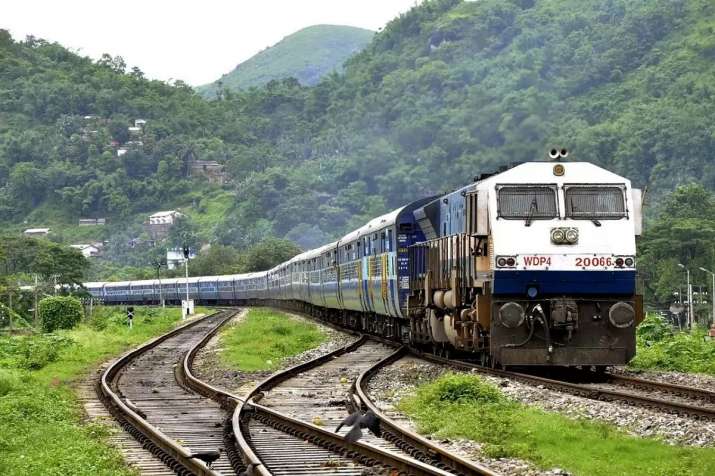
Railway land equal to 30 Narendra Modi stadiums encroached upon
Railways throws up its hands; tells parliamentary panel its own redevelopment projects are also not taking off; where does monetisation plan go from here?

One of the largest land owners among all government departments, the Indian Railways (IR), seems to be unable to curb illegal encroachments along its various land parcels spread across the country. And, it seems to have quite simply thrown up its hands on the issue.
IR admitted in Parliament that it has been unable to access over 1,900 acres of land, which is equivalent to 30 Narendra Modi Stadiums (the world’s largest cricket stadium built in Ahmedabad with a seating capacity of 1.3 lakh spectators and spread over 63 acres) due to encroachments.
Land is a valuable asset, more so in the case of Indian Railways, since the government has been eyeing vast tracts of used and unused land with the national transporter, as part of its larger asset monetisation pipeline.
About a fourth of the total National Monetisation Pipeline target of ₹6 lakh-crore, which was to be raised between 2022-2025, was to come from monetisation of Railways assets including tracks, stations and railway stadia. But now, as IR has admitted in Parliament that 780 hectares of land (nearly 1,934 acres) remains encroached and that the station redevelopment programme with participation of private entities has not all worked according to plan, will the NMP targets be met?
Stalled station redevelopment project
Besides not being able to access its own land parcels of over 1,900 acres, IR's station redevelopment project has seen multiple editions and various revenue generation models over the years without much success. The attempts of the ministry to redevelop one of the biggest railway stations (in terms of footfall and number of trains), the New Delhi Railway Station, have been unsuccessful multiple times due to lukewarm response from the private sector.
It is yet to take off despite repeated attempts at inviting private sector participation.
The issues related to land under IR and the performance of the Rail Land Development Authority (RLDA), a statutory authority set up by IR in 2006 to generate revenue by developing vacant and underutilised railway land, were examined by the Parliamentary Standing Committee on Railways.
Ministry helpless
In its response to the parliamentary panel, IR provided details of the number of actions its zonal authorities regularly took to evict encroachers. It said it could do little to address the issue. Further, it cited lack of support from local bodies/civil administration, local law and order issues and pending litigation about encroached land parcels to admit that adhering to its own mandated timeline for the removal of squatters looks difficult.
Under its own set of rules, eviction of encroachers from Railway land should happen within 15 days of an eviction notice.
In its seventeenth report, the Standing Committee again emphasised the removal of such large-scale encroachments and sought a specific timeline from the ministry for completion of this task. Many of the encroachment cases are in litigation – IR has empanelled 1,200 advocates across the country to fight these cases, it has informed the standing committee.
The panel has asked IR to coordinate with local authorities and law enforcement agencies to effectively enforce court orders of eviction.
Surveys, eviction drives
In three years, IR said, it retrieved nearly 100 hectares of encroached land and conducted nearly 9,700 surveys for the purpose. “Soft” encroachments are removed promptly but for “hard” type encroachments, a notice is first served within a week from receipt of information; a show cause notice is subsequently issued, followed by an eviction order. The eviction drive is carried out “not later than fifteen days from the date of the order”.
“However, due to the lack of support from local bodies/ civil administration, local law and order issue, pending court cases, the above timeline is difficult to adhere to for removal of encroachment in most of the cases,” IR has said.
In some locations, public representatives, local bodies or state governments demand rehabilitation/ resettlement of encroachers before eviction is done. This, many times, is not agreeable to the zonal Railway since there are no such guidelines from the Railway Board.
Majority of vacant land in strips
Up to 70 per cent of vacant land with the IR is in the form of “narrow strips” along railway tracks. The total vacant railway land is nearly 62,000 hectares, of which just 1,216 hectares has been given to RLDA for commercial development.
On its part, RLDA has managed to hand over just about 67 hectares for commercial development until now.
The parliamentary panel has asked the ministry to fast-track permissions for giving away more railway land for commercial development, identify more vacant land not required for immediate or future use for monetisation and expedite the participation of the private sector in railway station redevelopment.

